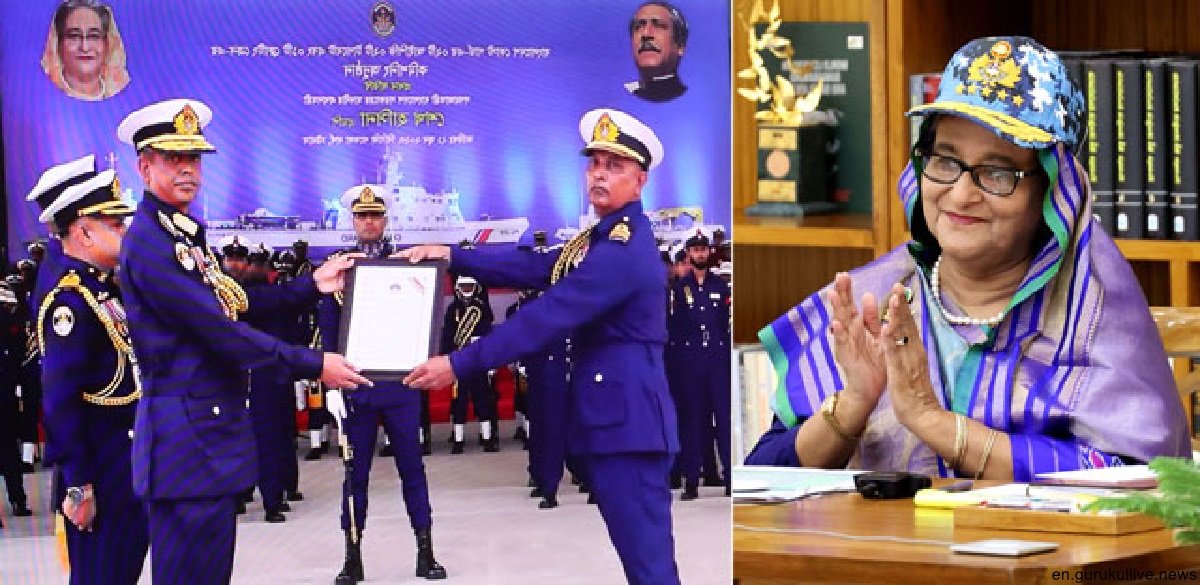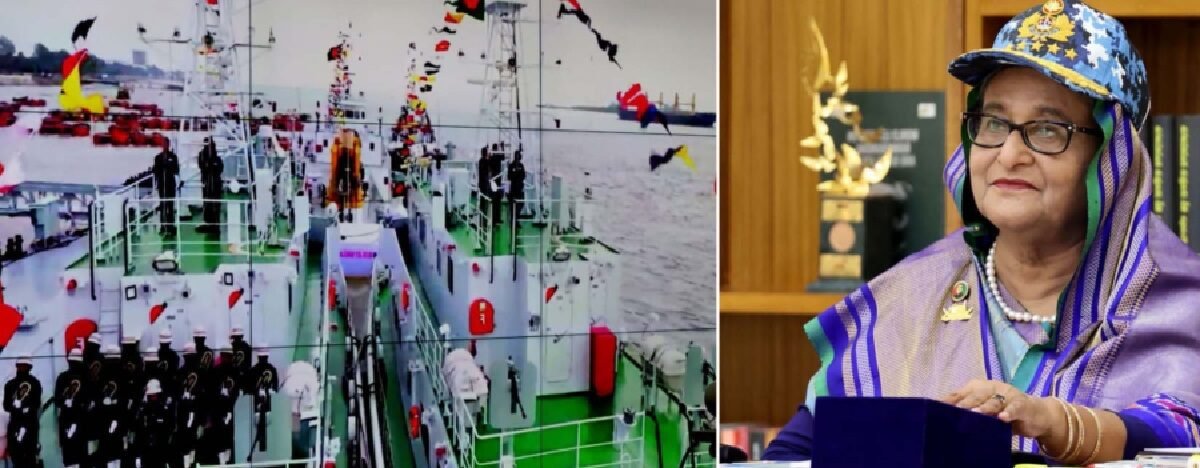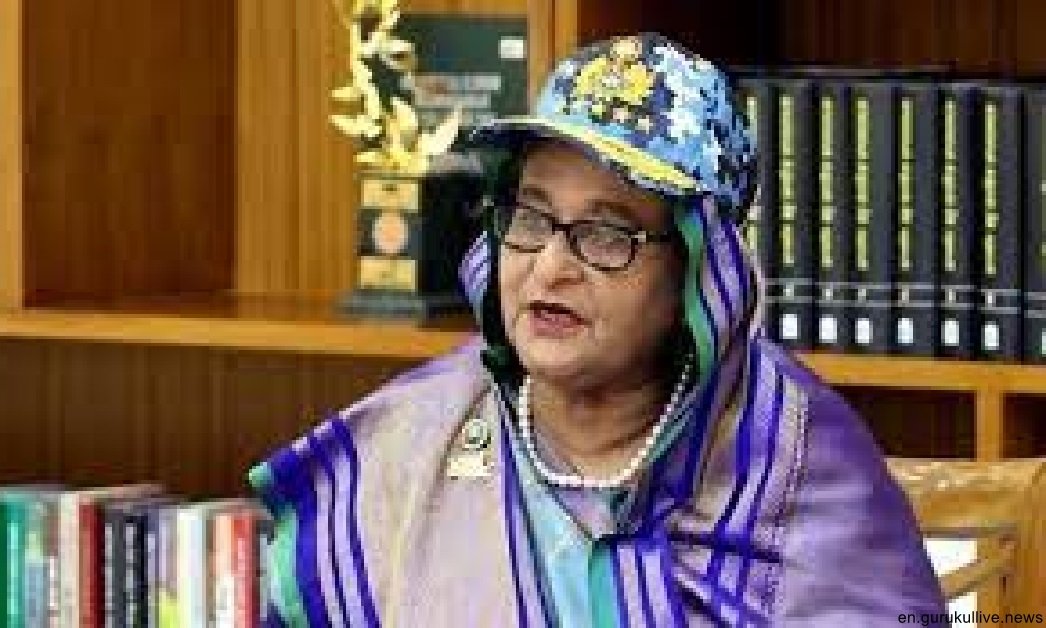Prime Minister Sheikh Hasina today called upon the members of the Bangladesh Coast Guard members to uphold the force’s reputation and dignity by discharging their duty with honesty and faith imbued with patriotism.

PM asks Coast Guard members to uphold the dignity
“I assure you (members of Coast Guard) that my government will provide all necessary assistance to keep running the continuous progress of this force as well as your overall welfare,” she said.
The premier said this while commissioning five locally-made state-of-the-art vessels of the Bangladesh Coast Guard in a ceremony in Patenga, Chattogram as the chief guest.
Joining through videoconferencing from her official residence Ganabhaban, Sheikh Hasina said that her government is working to make the Coast Guard a modern and contemporary force capable of fulfilling new responsibilities in the future.

In addition, the initiative of establishing digital connectivity with Bangabandhu Satellite-I is also being taken to bring a revolutionary change in the communication system of Bangladesh Coast Guard for national interest as well as the security and safety of people’s life and property in the deep sea, she said.
Besides, drone technology has been incorporated into Bangladesh Coast Guard to ensure the safety of forcibly displaced Myanmar citizens in Bhasanchar, she added.
As part of her government’s long-term plan to provide security to deep-sea and blue-economy, the Prime Minister said that they have planned to add two more all-weather and deep-sea Offshore Patrol Vessels (OPVs), a hospital ship, hovercraft, and several high-speed vessels by 2026-2030.
“By 2031 to 2041, the Coast Guard will be a self-sufficient, mature, modern, and exemplary smart force,” she added.
Mentioning that the government has also undertaken the Bangladesh Coast Guard’s own manpower recruitment program and force restructuring initiative, Sheikh Hasina said that the manpower of the Coast Guard has been increased by Awami League governments since 2009 as it remains in power successively.
She said that Bangladesh Coast Guard has been discharging its duty sincerely to keep the deep sea-dependent economic activities dynamic and secure as well as projects and individuals related to the blue economy.
Assuming power in 1996, she said, the Awami League government provided land, constructed infrastructure, and various types of vessels for the different zones of the Bangladesh Coast Guard.

In the second term of her government in 2009, the premier said that they have constructed coastal crisis management centers, officers’ and sailors’ residences at the bases, officers’ messes, sailors’ quarters, and administrative buildings at the guard’s stations and outposts.
Own training base “BCG Base Agrajatra” has been constructed in the Patuakhali region, she added.
In the last 14 years, Sheikh Hasina said that a total of 154 modern and faster ships and vessels of various sizes have been built and added to the Coast Guard.
In addition, four Offshore Patrol Vessels (OPVs), state-of-the-art 10-meter rescue boats, and 20-meter rescue boats from Japan have been added to the force’s fleet, she said, adding, a dockyard is also being constructed at Ghazaria for the construction, repair, and maintenance of Coast Guard vessels.
She hoped that Bangladesh Coast Guard will reach a new level of self-sufficiency and capability as a result of building ships in its yard.
Home Minister Asaduzzaman Khan and Senior Secretary of Public Security Division Md Mustafizur Rahman also spoke. Bangladesh Coast Guard Director General Rear Admiral Ashraful Hoq Chowdhury delivered a welcome address.
A short video was screened highlighting the operational activities of the Bangladesh Coast Guard and the newly commissioned vessels.
Of the five vessels, the two inshore patrol vessels “BCGS Joy Bangla” and “BCGS Apurba Bangla” were built by state-owned Dockyard and Engineering Works Limited in Narayanganj while two tugboats “BCGT Pratyay” and “BCGT Pramatta” and the floating crane “BCGFC Shakti” were made by the Khulna Shipyard.
On behalf of the Prime Minister, the Director General of the Bangladesh Coast Guard handed over the “commissioning forman” to the commanding officers of the newly commissioned vessels.
Later, the premier unveiled the nameplates of the newly commissioned vessels of the Bangladesh Coast Guard.

The members of the Coast Guard also gave a state salute to the Prime Minister.
The new vessels are equipped with ultramodern machinery, sensors, and surveillance radar. The inshore patrol vessels have three automatic cannons, which will play a vital role in protecting and running operational activities.
The vessels have a surveillance capacity of 96 nautical miles and the cannons’ range is 4 kilometers. The ships can identify anything like other vessels, criminals, or enemies within this range while the cannons will help the BCG conduct operational activities smoothly.
With the commissioning of these five vessels, the operational activities of the BCG will accelerate along with an increase in the capacity to prevent stealing at commercial ships at the outer anchor, control human and drug trafficking through the sea, patrol along the blue economy borders, and conduct rescue operations in case of natural calamity and maritime accidents.
According to BCG officials, Bangabandhu’s daughter Sheikh Hasina placed the “Bangladesh Coast Guard Bill” in parliament in 1994 when she was the opposition leader in the House. Following her proposal, the Bangladesh Coast Guard was established on February 14 in 1995.
Later, new platforms and infrastructural development were added to the Coast Guard at the directives of Prime Minister Sheikh Hasina, which accelerated the operational activities of the force and yielded enormous success.
Along with an active presence in coastal water areas and ensuring proper use of marine resources as a vigilant watchdog, the Coast Guard has been playing a vital role since its inception in conserving marine resources, preventing smuggling in coastal areas, controlling drug smuggling, conserving forest resources, preventing environmental pollution in the areas adjacent to the sea and rivers and stopping catching of Jatka and Mother Hilsa and preventing human trafficking.
See more:
